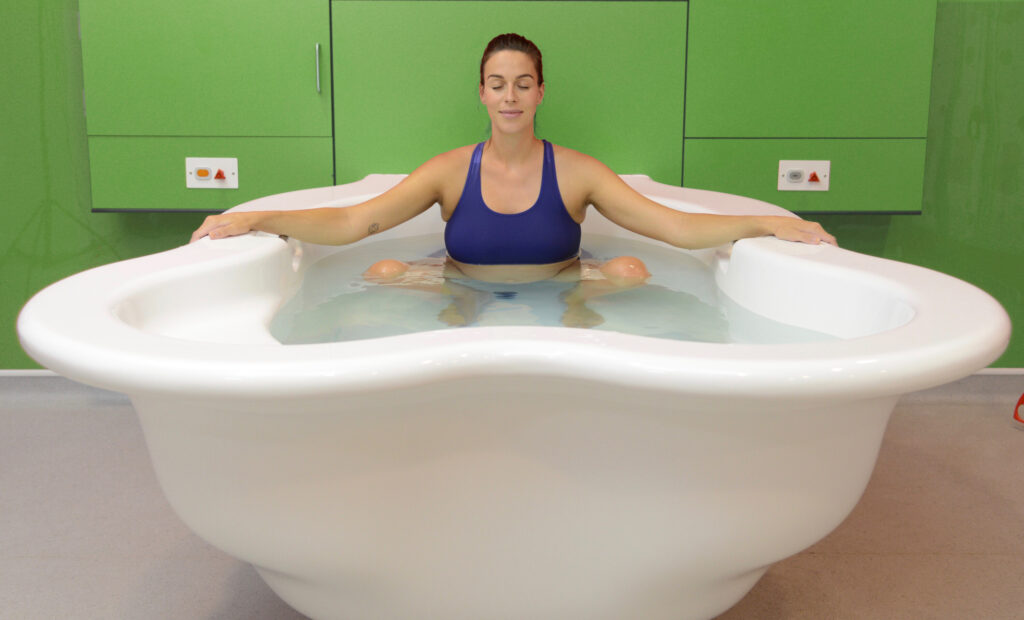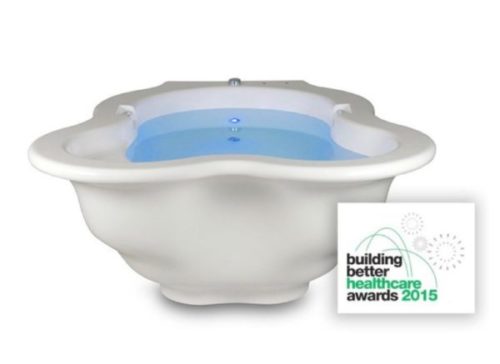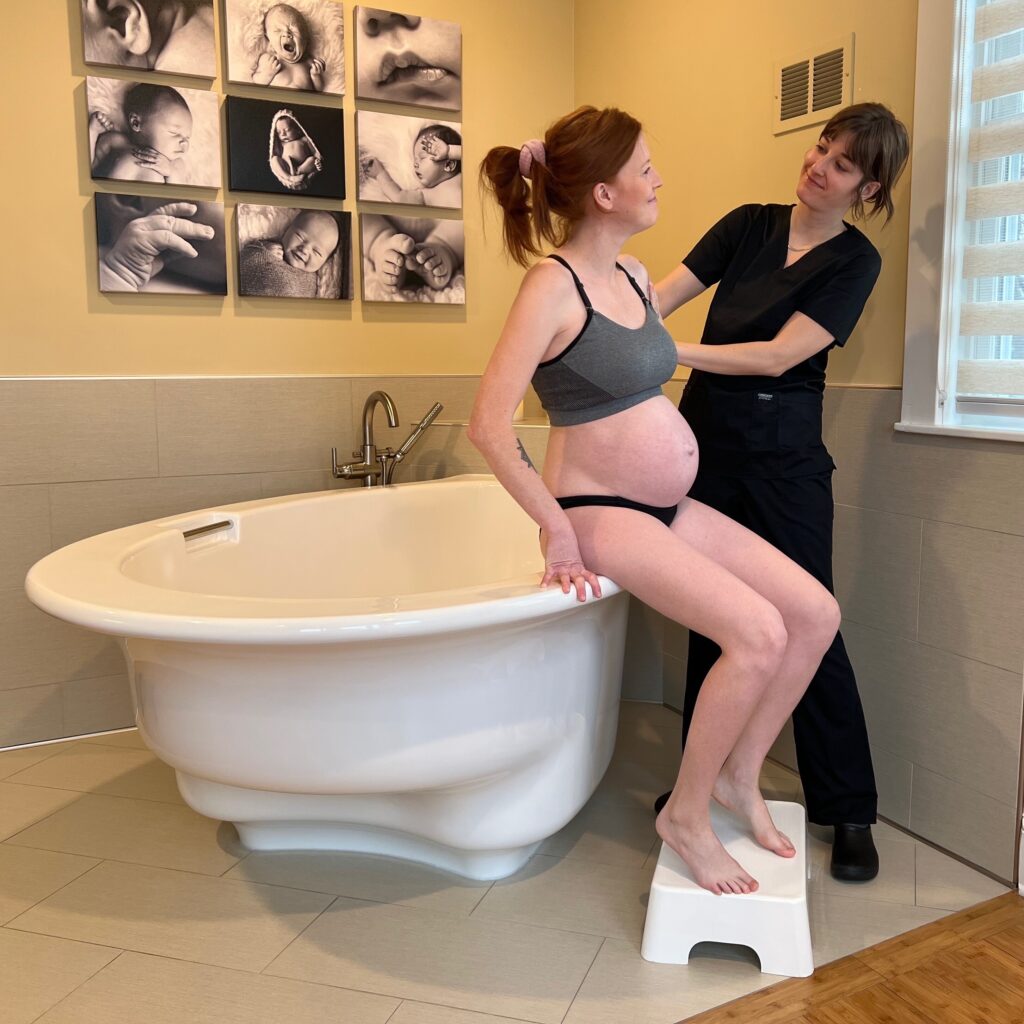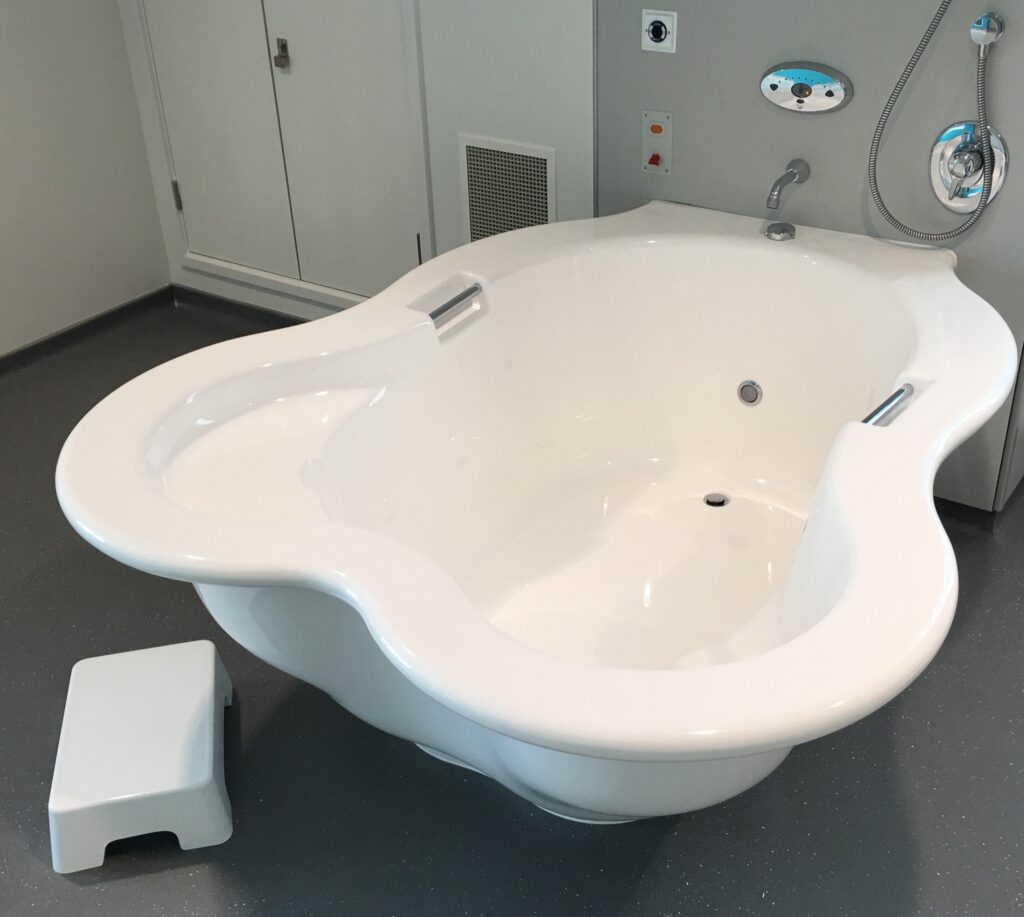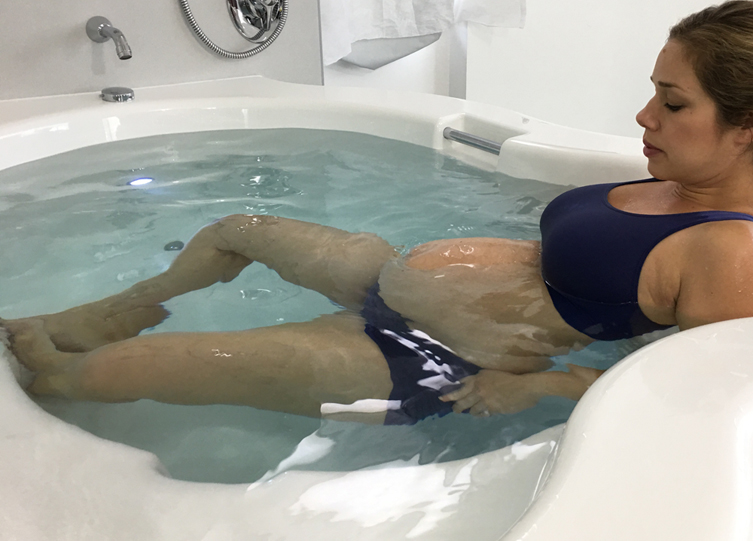Zainab Kassim, clinical research fellow in neonatology1, Maria Sellars, consultant in radiology2, Anne Greenough, professor of neonatology and clinical respiratory physiology1
1 Department of Child Health, Guy’s, King’s and St Thomas’ School of Medicine, King’s College Hospital, London SE5 9RS, 2 Department of Radiology, King’s College Hospital, London
Introduction
In 1992 the House of Commons Select Health Committee’s report on maternity services recommended that all hospitals should provide women with the “option of a birthing pool where this is practicable.
“1 A subsequent surveillance study of all NHS maternity units between 1994 and 1996 found that 0.6% of all deliveries in England and Wales occurred in water.2
Rawal and colleagues have suggested that water births have become popular among mothers and midwives because the buoyancy and warmth of the water promotes natural labour while providing a non-invasive safe and effective form of pain management.3
Practitioners and parents should remember, however, that birthing pools pose potential risks for the baby. We report on a newborn baby who developed respiratory distress due to aspiration after an underwater birth.
Case Report
A full term male infant weighing 3150 g was born in the birthing pool of the labour ward of our hospital. His mother was a 34 year old, healthy primigravida who had had an uneventful pregnancy.
She had gone into spontaneous labour at 40 weeks’ gestation and had had no maternal fever during labour; at delivery the membranes had been ruptured for less than 18 hours. The baby was born underwater.
He required no resuscitation but, when reviewed at one hour, was grunting. As the grunting persisted, he was admitted to the neonatal intensive care unit at 3 hours of age. He had no fever but was tachypnoeic and had intercostal recession and nasal flaring.
He needed supplementary oxygen to maintain his oxygen saturation level at 92%; his need for supplementary oxygen persisted for nine hours. He was screened for infection and started on antibiotics (benzylpenicillin and gentamicin).
In view of his respiratory distress, which persisted for 48 hours, he was designated “nil by mouth” and fluid was administered intravenously until he had recovered. Chest radiography soon after admission showed widespread changes consistent with aspiration of the birthing pool water (figure).
Further radiography, on day 3, showed resolution of the abnormalities, and the infection screen was negative. The infant made a full recovery and, when seen as an outpatient at age 3 months, was free of symptoms.
Discussion
Some researchers have suggested that “babies can only drown when submerged, only if they are already severely compromised and literally at their `last gasp,’ as water simulates vagal inspiration receptors causing glottic closure.”4
In lambs, however, inhibitory mechanisms that prevent breathing until the lamb is in contact with cold air can be overridden by sustained hypoxia.5
Likewise, in a birthing pool, some babies with unrecognised hypoxia may gasp underwater. Indeed, the 1994 to 1996 survey cited two reports of water aspiration,2 and similar cases have been documented in the literature.6-8
Our case report emphasises the adverse effects of aspiration of water in birthing pools. Although such events seem uncommon, this may be the result of under-reporting.
Respiratory distress immediately after birth is common and has various aetiologies. Thus, unless a careful history is taken, the cause the respiratory distress may be misdiagnosed.9
We are confident that the case we report was due to aspiration of water as the infant developed symptoms soon after birth, with resolution by 48 hours.
In addition, there were no risk factors for infection or indeed any bacterial infection identified. Infection after water birth has been described.10-12
The baby in our case report was delivered after spontaneous labour at term, making transient tachypnoea of the newborn unlikely; indeed, the chest radiograph was consistent not with that diagnosis but with aspiration.
A systemic review of randomised trials has shown that immersion during labour is associated with significant reductions in the use of epidural, spinal, or paracervical analgesia and in women’s reports of pain, but highlighted there were insufficient data to determine the outcome from randomised trials of birth in water for women or their infants.13
In addition to water aspiration and subsequent pulmonary oedema,8 however, other adverse neonatal outcomes after water birth have been reported; these include water intoxication, hyponatraemia, hypoxic ischaemic encephalopathy, cord rupture with neonatal haemorrhage, and pneumonia.12 14
Women who have water births are usually considered to be “low risk,” and so they and their infants should have an excellent prognosis. Our case report and review of the literature confirm that water birth has risks for the newborn.
Practitioners and parents need to be aware of these potential risks so that mothers can make a fully informed decision about place of delivery.
Water birth can be associated with adverse effects in the newborn
Contributors: ZKand AG collected the clinical data, and MS col- lected the radiographic data. All authors contributed to writing the paper, and AG is the guarantor.
Funding: No special funding. Competing interests: None declared.
References
-
-
- House of Commons Health Select Committee. Maternity services. Second report. London: HMSO, 1992.
- Ruth E, Gilbert P, Tookey A. Prenatal mortality and morbidity among babies delivered in water: surveillance study and postal survey. BMJ 1999;319: 483- 7.
- Rawal J, Shah A, Stirk F, Mehtar S. Water birth and infection in babies. BMJ 1994;309: 511-2.
- Kitzinger S. Sheila Kitzinger’s letter from Europe: the waterbirth debate up-to- date. Birth 2000;27: 214-6.
- Johnson P. To breathe or not to breathe. Br J Obstet Gynaecol 1996; 103: 202- 3.
- Rosser J. Is water birth safe? The facts behind the controversy. MIDIRS Midwifery Digest 1994;4: 4-6.
- Barry CN. Water births. Could saline in the pool reduce the potential hazards? BMJ 1995;310: 1602.
- Nguyen S, Kuschel C, Teele R, Spooner C. Water birth—a near-drowning experience. Pediatrics 2002;110: 411-3.
- Bowden K, Kessler D, Pinette M, Wilson E. Underwater birth: missing the evidence or missing the point? Pediatrics 2003;112: 972-3.
- Rawal J, Shah A, Stirk F, Mehtar S. Water birth and infection in babies. BMJ 1994;309: 511.
- Nagai T, Sobajima H, Iwasa M, Tsuzuki T, Kura F, Amemura-Maekawa J, et al. Neonatal sudden death due to Legionella pneumonia associated with water birth in a domestic spa bath. J Clin Microbiol 2003:41: 2227-9.
- Pinette MG, Wax J, Wilson E. The risks of underwater birth. Am J Obstet Gynecol 2004;190: 1211-5.
- Cluett ER, Nikodem VC, McCandilish RE, Burns EE. Immersion in water in pregnancy, labour and birth. Cochrane Database Syst Rev 2005;(1)
- Schroeter K. Water births: a naked emperor. Pediatrics 2004;114: 855-8.
-
(Accepted 16 March 2005)
Related Articles
Underwater birth and neonatal respiratory distress: Case report does not constitute reliable evidence
Elizabeth Cluett, Rona McCandlish, Ethel Burns, and Cheryl Nikodem
BMJ 2005 330: 1447-1448. [Extract] [Full Text]
Underwater birth poses risks for the baby
BMJ 2005 330: 0. [Full Text]
Perinatal mortality and morbidity among babies delivered in water: surveillance study and postal survey
Ruth E Gilbert and Pat A Tookey
BMJ 1999 319: 483-487. [Abstract] [Full Text] Author’s reply
Philip Steer
BMJ 1995 310: 1602. [Extract] [Full Text] Water birth and infection in babies
J Rawal, A Shah, F Stirk, and S Mehtar BMJ 1994 309: 511. [Full Text]
This article has been cited by other articles:
Rapid Responses:
Read all Rapid Responses
Water quality underwater birth
Chris N Hudson
bmj.com, 8 May 2005 Water Birth
Andrya C Prescott
bmj.com, 11 May 2005
Waterbirth case report does not constitute reliable evidence
Elizabeth Cluett, et al. bmj.com, 11 May 2005
Underwater Birth.
Stan Hammersley
bmj.com, 12 May 2005 [Full text] Is it water aspiration?
Martin Lalinec-Michaud
bmj.com, 12 May 2005
One ‘lesson of the week’ may be to be careful not to misquote!
Sheila Kitzinger
bmj.com, 14 May 2005
Water birth : absolute risks remain unclear
Andrew C. Breeze, et al.
bmj.com, 17 May 2005
neonatal respiratory distress and water aspiration
Simone Rugolotto
bmj.com, 17 May 2005 [Full text]
Water Birth-A Paediatrician’s Perspective
Monika Bajaj, et al.
bmj.com, 12 Jun 2005


